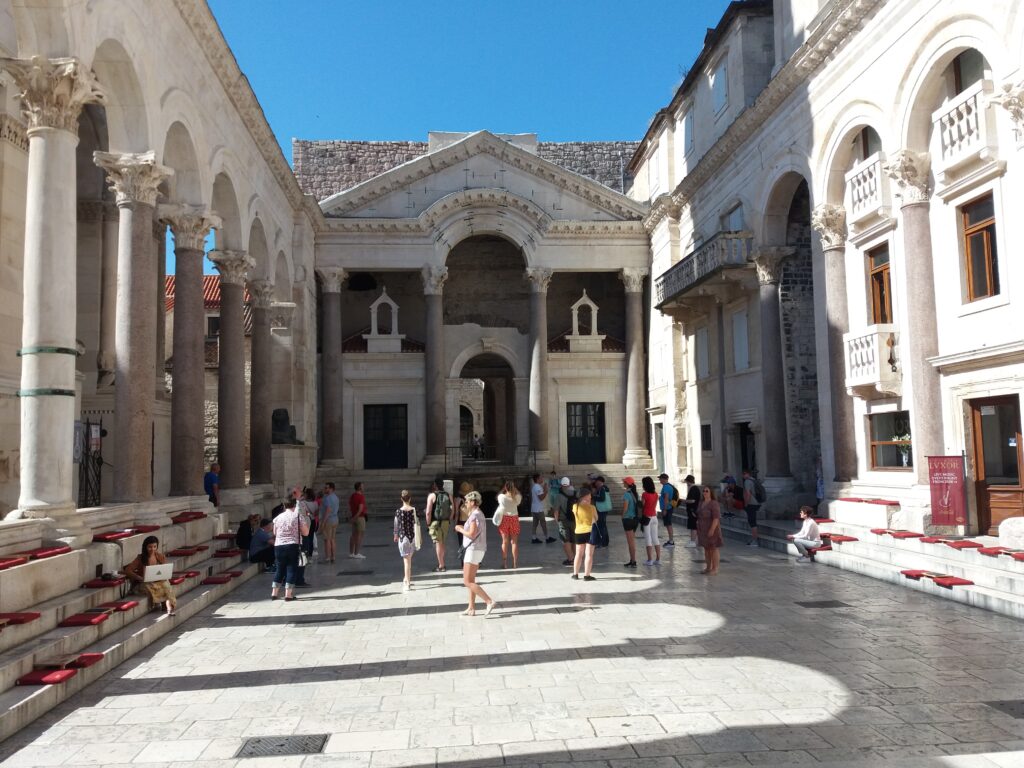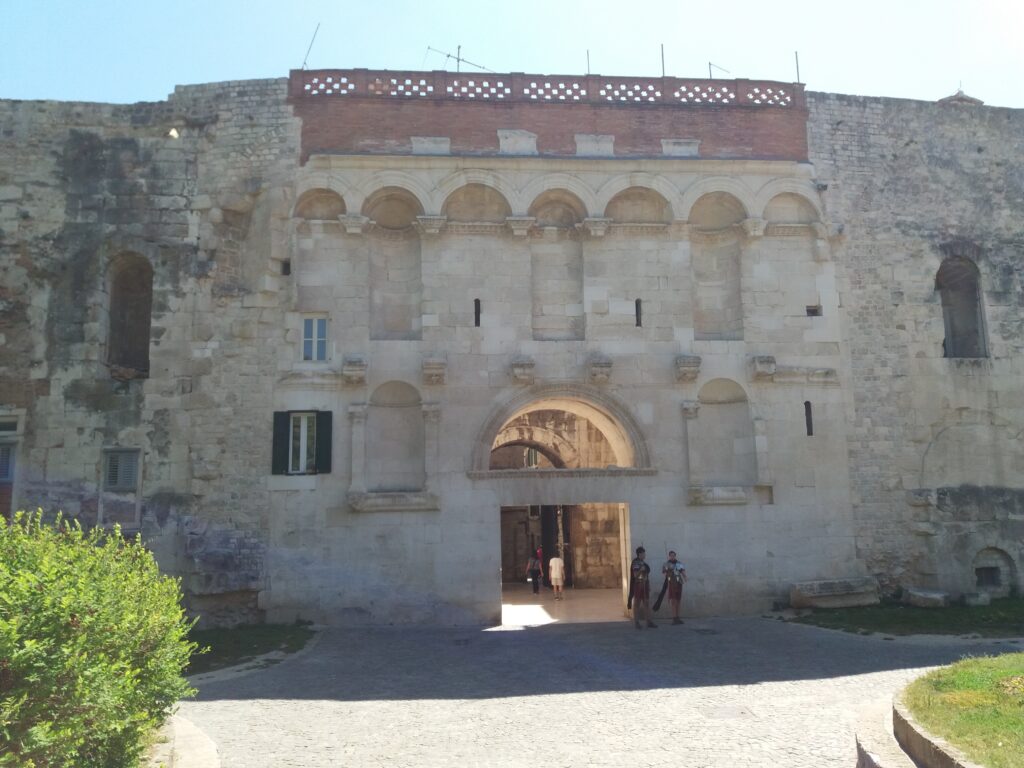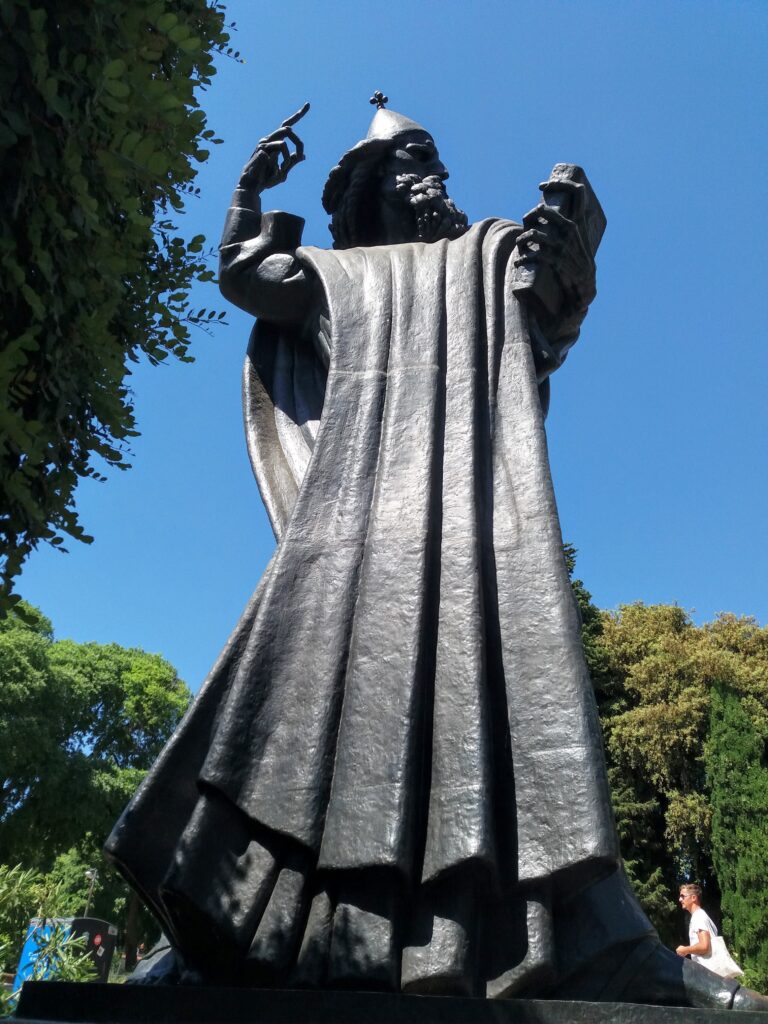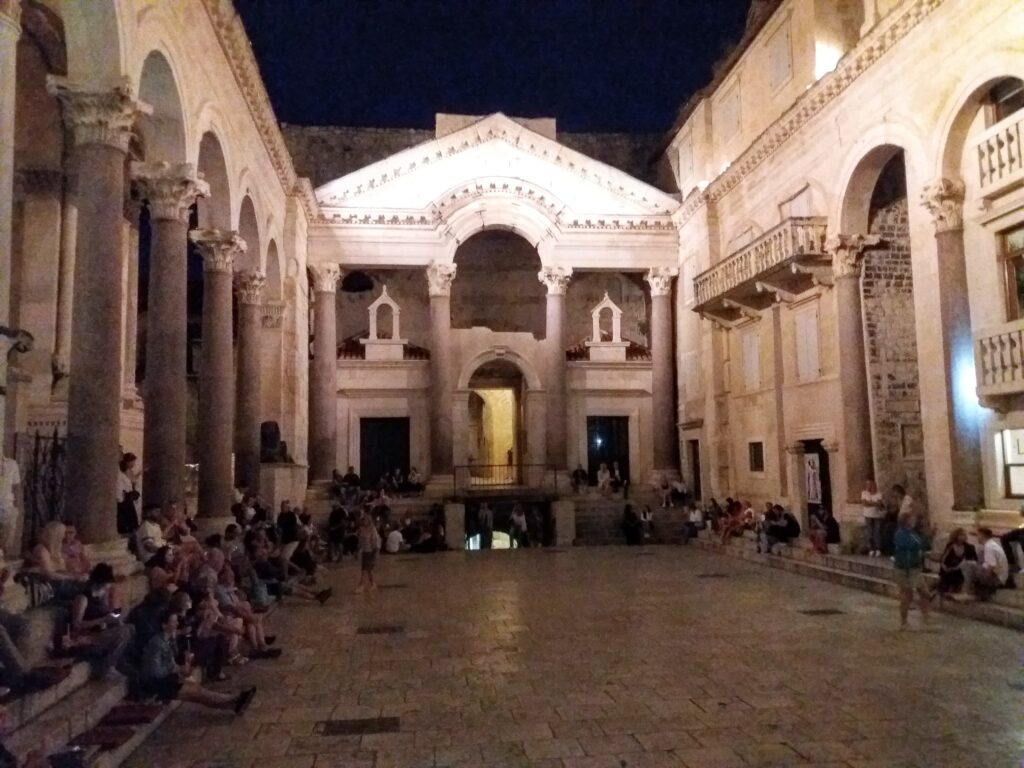Walking Tour of Split Old Town
After breakfast on our last day in Split, we opted to take a walking tour of the old town. We fumbled our way through narrow alleys until we came to the Peristyle, the courtyard at the centre of the Roman palace complex built for the Emperor Diocletian. Even though tourism is in full swing, archaeology excavations continued nearby. This is living history in the real sense of the word.
Once you enter the Peristyle, there are a number of walking tours available,clearly visible from the big colourful signs the guides hold aloft. Prices start around 150 Kuna per person but are very negotiable depending on the size of the group. We spoke to one guide who explained how long the tour would be and what would be covered. Satisfied, we agreed on a price and began our tour.

“The emperor Diocletian was a low-born Roman who rose through the ranks of the army to become emperor in 284 AD”, our guide explained. “He realised that the empire was too large to be ruled by one person so introduced the first tetrarchy ‒ shared rule by four emperors. He was also the first emperor to abdicate the throne and had this palace complex built as his retirement home.”
We followed our guide outside the palace to the Golden Gate (Northern Gate) which would have been one of the entrances to the palace in Roman times. Actors dressed as Roman centurions stood guard outside, waiting to pose with tourists. The outer wall was about seventy feet high and still intact. How can this still be standing after multiple wars and ravages of time? It was a tribute to the Roman engineers who built it. “The Romans used a special concrete mix that was very strong,” our guide said after I asked that very question. “They used egg white and volcanic ash in this mix, which made it very hard indeed.”

Gregory of Nin
Across from the northern gate is the imposing statue of Gregory of Nin, a medieval bishop who championed the Croatian language in religious services. I rubbed his big toe, much to the puzzlement of nearby tourists. “It’s for good luck,” I explained and even mentioned someone had painted his toenails red at one point. His imposing statue originally stood inside the Peristyle but during the Italian occupation in World War Two, the Italians wanted it removed and melted down. The Croats instead had it cut into large pieces and buried. Once the war was over, it was welded back together and brought to its current resting place.

We followed our guide back to the Peristyle where he pointed to the octangal building just outside the courtyard. “This was Emperor Diocletian’s mausoleum, built while he was still alive and intended as a place of worship after he had died. Diocletian persecuted Christians very badly at the time of his reign, including the local bishop Domnius. Sometime after the collapse of the Roman empire, Diocletian’s sarcophagus was destroyed and the mausoleum pillaged. In 653 AD, the mausoleum was consecrated as a Christian cathedral dedicated to the now canonised Saint Domnius.”
Plunder from Ancient Egypt
While listening to the fascinating history, I couldn’t help but wonder at the black sphinx seated on the wall just in front of the cathedral. Was it real? How did it come to be there? I tried to ask the guide but he smiled and waved a hand. “Don’t worry, I will explain all this but first, let me bring you somewhere a little cooler.”
He led us down the nearby stone steps to ancient cellars that now homed souvenir shops. As promised, it was noticeably cooler than at ground level. “During Roman times, these cellars were used to store food, wine and other items,” our guide explained. “After the fall of the Roman empire, they were instead used as a vast cesspool, storing waste from the many households that occupied the area. You can only imagine the stench during the hot summer months. During excavation work, archaeologists found a broken sphinx that was reassembled and placed in the Peristyle. That is the one we saw seated in front of the cathedral. This and another are all that remain of the twelve Egyptian sphinxes that Diocletian had shipped from Egypt to adorn his palace. They were made from black Egyptian granite and date from around 1450 BC.”
Party in the Peristyle
Later that evening, we returned to the Peristyle for one last look. A guitarist played popular hits while people sat around the courtyard, being served drinks and snacks. I had to keep reminding myself this was an ancient Roman palace and not an outdoor arena. We found some seats and ordered beers, enjoying the atmosphere. As good as the guitarist started playing Wonderwall by Oasis, we shot out of our seats to sing and dance. Some Americans joined us and soon, the place was crowded with people singing to Oasis. The Americans were great fun, retired but loving life. They taught us a funny dance and I sang my old party piece Caledonia for a group of Scottish ladies.
How amazing is it to see Roman buildings still in use to this day? People are shopping, eating, drinking, sleeping and shagging within the same walls the Romans were doing these things over 1800 years ago. In other places, such historical buildings are kept behind barriers. Here, you are scrambling over them, sitting on them, just as roman arses did centuries ago.








